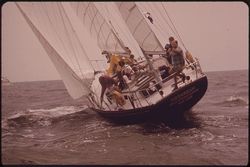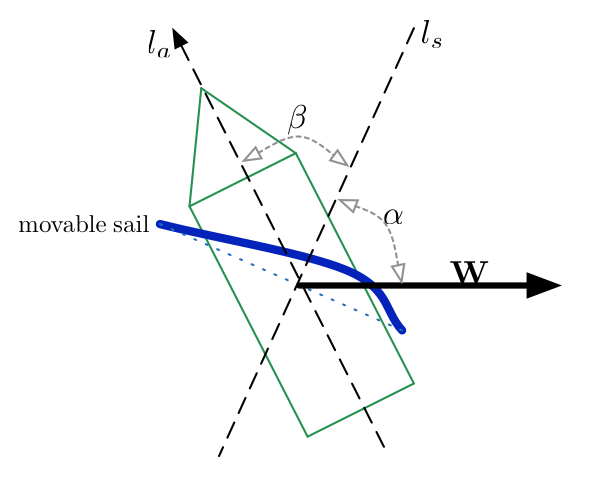Sailing Against The Wind
 It is possible for ships to move upwind using only the power of the wind itself, using a process called tacking. It requires a movable sail and a keel that prevents the ship from sliding.
It is possible for ships to move upwind using only the power of the wind itself, using a process called tacking. It requires a movable sail and a keel that prevents the ship from sliding.
Because the keel keeps the ship from moving sideways, only forces along the boat's axis will actually push the boat. By orienting the sail correctly, the projection of the wind's force onto the sail—which is then projected onto the axis of the ship—can create a movement which is partially in the direction opposite the wind .

In the diagram above, is the direction of the wind, is perpendicular to the sail and is along the ship's axis ( with and ).
Assuming , what percent of the wind's force could the ship apply in the direction opposite to .
This section requires Javascript.
You are seeing this because something didn't load right. We suggest you, (a) try
refreshing the page, (b) enabling javascript if it is disabled on your browser and,
finally, (c)
loading the
non-javascript version of this page
. We're sorry about the hassle.
At the direction of l s acting force is W cos α Again at the direction of l a acting force is W cos α cos β Now, at the opposite direction of W the acting force is W cos α cos β cos ( π − ( α + β ) ) Since, α = β = 3 π Therefore, we have 8 1 = 1 2 . 5 %